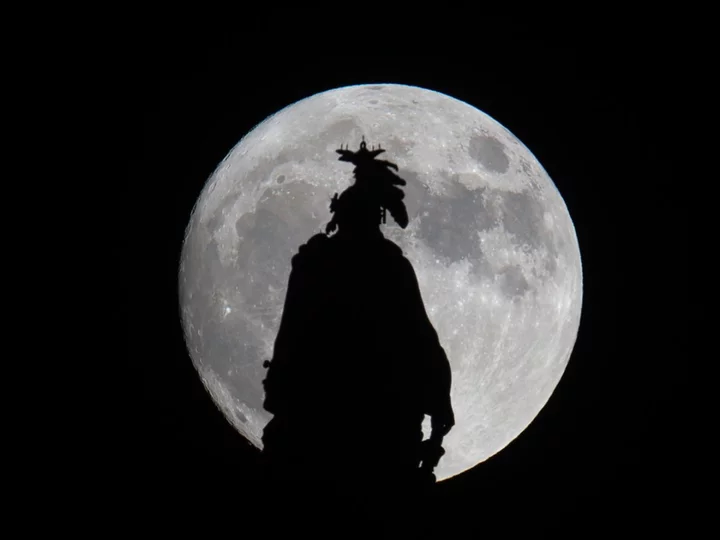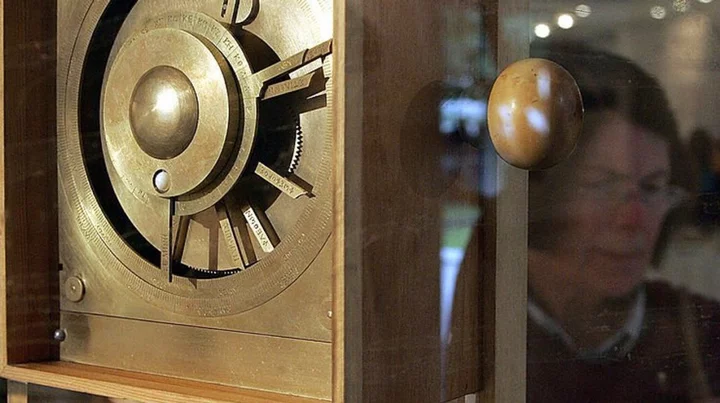The April 2020 supermoon will be the biggest and brightest of 2020 as its elliptical orbit brings it closer to the Earth in more than a year.
On 7-8 April, the full moon will reach as close as 356,907km (221,772 miles), and will appear most impressive at moonrise on Tuesday and moonset on Wednesday.
Clear skies in the UK, combined with unusually low air pollution due to the coronavirus lockdown, make it one of the best opportunities in years to view the rare celestial phenomenon. Here’s how to take the perfect picture of it:
Use a landmark to get perspective
Everyone will be taking pictures of the supermoon by itself, but some of the best pictures show the moon next to a land mark or trees and houses, which is what helps to give the picture “a sense of place”, says Nasa’s senior photographer, Bill Ingalls. “Think of how to be creative – that means tying it into some land-based object. It can be a local landmark or anything to give your photo a sense of place.”
Pick the best spot
Location isn’t everything, but it can definitely help with getting a perfect picture of the supermoon if you have time to plan it. You can look up the best monuments or statues in your area to photograph the image of the moon against, like Mr Ingalls does in Washington D.C., where he lives. “It means doing a lot of homework. I use Google Maps and other apps – even a compass – to plan where to get just the right angle at the right time,” he told Nasa.
Use an app to find the moon
Unless you're an astronomer, the best way to know where the moon will rise or set is to use a app on your smartphone to locate it. There are several free or cheap options you can choose from, each using your phone's inbuilt accelerometer to know which way you're facing.
The apps can also tell you what phase the moon is in, while some even give other celestial details, like the location of planets and star constellations. Decent options for iOS and Android devices include Star Chart, Sky Safari and Skyview.
Get the right exposure
If you’re using a camera where you can control the shutter speed, don’t go for a long exposure even though the picture will be taken in low light, National Geographic photographer Mark Thiessen told the magazine, as it will lose any chance of capturing lunar detail and make the moon itself appear too bright.
If you’re taking a picture on your camera, control the light balance by first tapping the screen where the moon appears to get the camera to focus on the object before dragging your finger up and down to play with the exposure. “You’ll usually want to drag it down for underexposure to be sure you have all the highlight detail,” National Geographic photographer Michael Christopher Brown said.
Use a tripod for your camera or rest your phone on a solid surface
David Reneke, an astronomer and writer for Australian science magazine told ABC.net that if you’re using an SLR or DSLR then it’s important to play with aperture settings on your camera to photograph the supermoon, but that using a tripod is essential.
It’s worth using a tripod for taking pictures with a smartphone too, as any camera shake can compromise the quality of the pictures – but if you don’t have one to hand you can simply rest your phone on a window ledge.
For older smartphones that use a digital zoom rather than an optical zoom, it’s generally best not to use the zoom as it could compromise the quality of the image. Instead, take the picture and then crop it.
Newer phones like the Huawei P30 and P40 series feature incredible zoom capabilities that can take detailed pictures of far away objects. Other cameras come with special features to improve pictures of the night sky, such as the Google Pixel 4’s Astro mode.
Read MoreHow to take the perfect picture of tonight's supermoon
Hundreds of years after it was discovered, one material could change the world
Kanye West allowed back on Twitter following his ban over antisemitic conspiracies
Hundreds of years after it was discovered, one material could change the world
Kanye West allowed back on Twitter following his ban over antisemitic conspiracies
As Twitter becomes X - Seven disastrous rebrands from Royal Mail to New Coke









